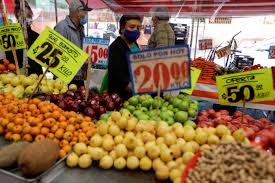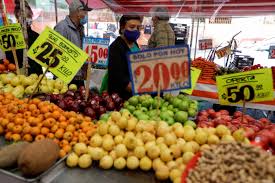
The UN Food and Agriculture Organization's world price index fell for the fifth month in a row in August, falling further from all-time highs reached earlier this year, as grain exports from Ukrainian ports resumed, contributing to improved supply prospects.
The Food and Agriculture Organization (FAO) reported on Friday that its price index, which tracks the most widely traded food commodities globally, averaged 138.0 points last month, up from 140.7 points in July.
The previous figure for July was 140.9.
The index has dropped from a high of 159.7 in March, following Russia's invasion of Ukraine. The August reading, on the other hand, was 7.9 per cent higher than the previous year.
According to FAO, the cereal price index fell 1.4% month on month in August, with the re-opening of Ukrainian Black Sea ports under a diplomatic agreement, as well as favorable wheat harvest prospects in North America and Russia, weighing on prices.
However, the maize price index increased 1.5% last month as hot, dry weather reduced the outlook for production in Europe and the United States, according to the report.
The price indices for vegetable oil, sugar, dairy, and meat all fell, reflecting improved supply.
FAO reduced its forecast for global cereal production in 2022 from 2.792 billion tonnes in early July to 2.774 billion tonnes in separate cereal supply and demand estimates.
This is 1.4 per cent less than the estimated output for 2021.
FAO reduced its forecast for 2022 cereal production due to weather-related corn prospects in the northern hemisphere, with European Union yields falling 16 per cent below their five-year average.
In 2022/23, global cereal consumption is expected to exceed production by 2.792 million tonnes, resulting in a 2.1% decrease in global stocks to 845 million tonnes compared to 2021/22.
According to FAO, this would represent a stocks-to-use ratio of 29.5per cent, down from 30.9 per cent in 2021/22 but still relatively high historically.
(Source:www.alarabiya.net)
The Food and Agriculture Organization (FAO) reported on Friday that its price index, which tracks the most widely traded food commodities globally, averaged 138.0 points last month, up from 140.7 points in July.
The previous figure for July was 140.9.
The index has dropped from a high of 159.7 in March, following Russia's invasion of Ukraine. The August reading, on the other hand, was 7.9 per cent higher than the previous year.
According to FAO, the cereal price index fell 1.4% month on month in August, with the re-opening of Ukrainian Black Sea ports under a diplomatic agreement, as well as favorable wheat harvest prospects in North America and Russia, weighing on prices.
However, the maize price index increased 1.5% last month as hot, dry weather reduced the outlook for production in Europe and the United States, according to the report.
The price indices for vegetable oil, sugar, dairy, and meat all fell, reflecting improved supply.
FAO reduced its forecast for global cereal production in 2022 from 2.792 billion tonnes in early July to 2.774 billion tonnes in separate cereal supply and demand estimates.
This is 1.4 per cent less than the estimated output for 2021.
FAO reduced its forecast for 2022 cereal production due to weather-related corn prospects in the northern hemisphere, with European Union yields falling 16 per cent below their five-year average.
In 2022/23, global cereal consumption is expected to exceed production by 2.792 million tonnes, resulting in a 2.1% decrease in global stocks to 845 million tonnes compared to 2021/22.
According to FAO, this would represent a stocks-to-use ratio of 29.5per cent, down from 30.9 per cent in 2021/22 but still relatively high historically.
(Source:www.alarabiya.net)





